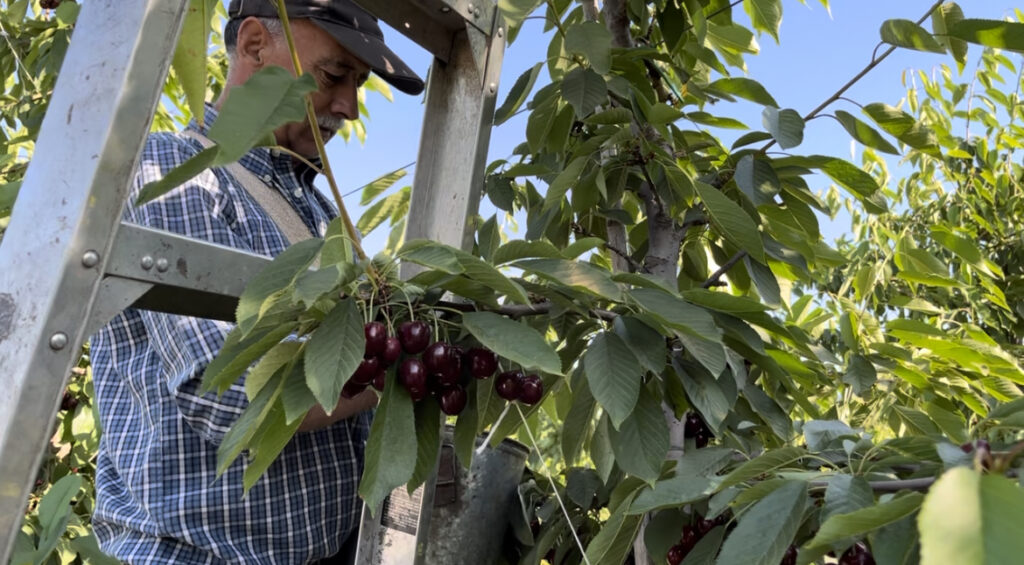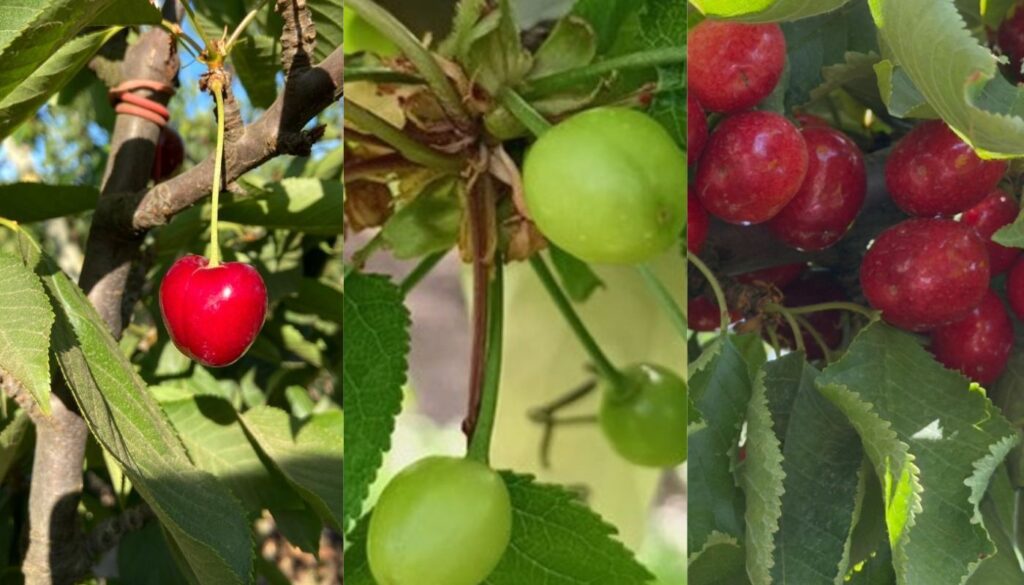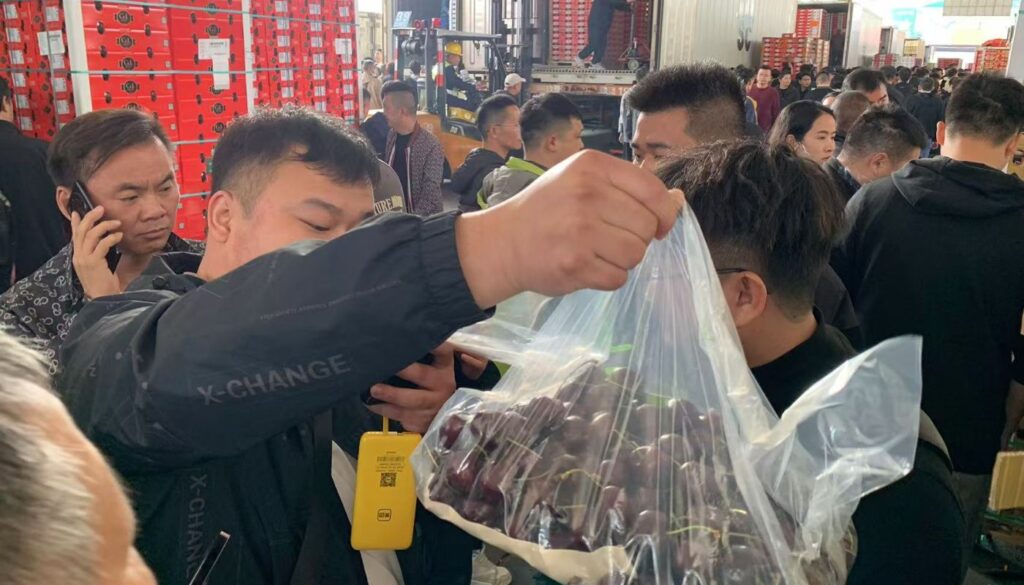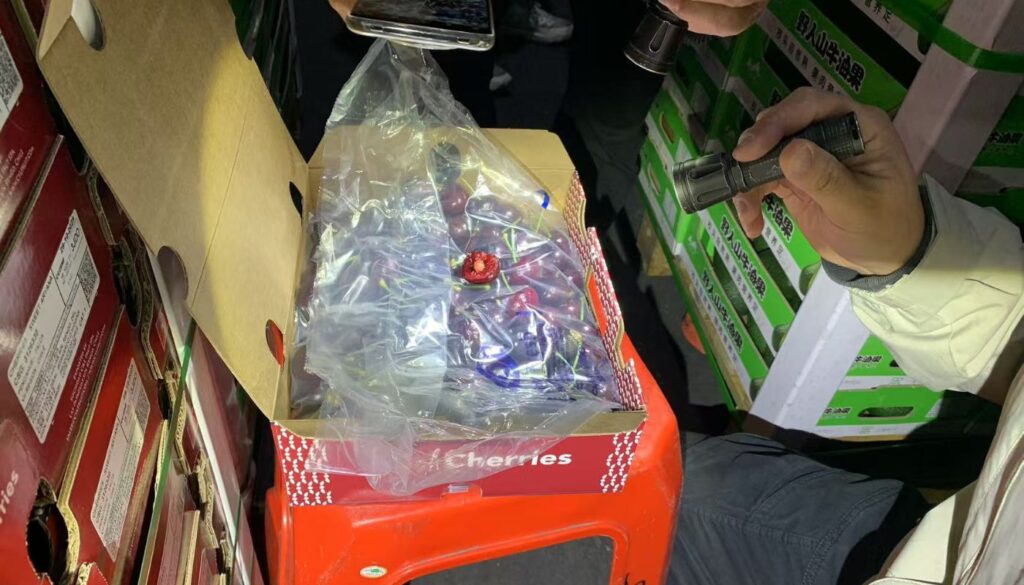Weeds, whether we like it or not, are present in cherry orchards; however, their control, management and eradication is essential, because they compete for water and nutrients, are hosts for pathogens or insects, cause allelopathic action, that is, the direct inhibition of one species by another, and hinder cultural work.
It is necessary to strategically control weeds in order to minimize losses in orchard production; there are different alternatives for this, which are mentioned and explained below:
- Soil maintenance: Keeping the soil covered with an organic mulch can help suppress weed growth by blocking sunlight and reducing weed seed germination. This also helps retain soil moisture and improve soil structure.
- Manual control: Manually removing weeds is an effective and environmentally friendly way to control them, especially in small areas or around trees. It is important to remove weeds along with their roots to prevent them from growing back.
- Machine tools: Using mechanical tools such as weeders, cultivators, or tillers can be helpful in controlling large areas of weeds in cherry orchards. These tools can efficiently cut or pull out weeds.
- Chemicals: Chemical herbicides can be effective for weed control in cherry orchards, but it is important to use them carefully and according to the manufacturer's instructions to avoid harming cherry trees or contaminating the environment. Herbicides should be selected that are safe to use around fruit trees and that will not adversely affect the quality of cherries.
- Integrated pest and weed control: Implementing an integrated control approach that combines various strategies, such as the use of organic mulch, manual control, mechanical tools and chemicals selectively and at the right time, may be the most effective and sustainable way to control weeds in cherry orchards.
It is important to regularly monitor the orchard for the presence of weeds and take control measures in a timely manner. In addition, maintaining a clean and well-kept orchard not only helps control weeds, but also promotes the growth and health of cherry trees, which translates into better productive potential.
Although control can be mechanical, chemical or a combination of both, the choice will depend on each producer and, of course, on the size and type of orchard; in addition, various aspects must be taken into consideration; for example, mechanical control involves raking, plowing or cutting, which destroys the weeds present, but these will reappear, depending on the conditions of the environment.
According to the publication “Cherry cultivation in dry land in the Biobío region” “In vegetatively propagated weeds, mechanical control methods are counterproductive as they help in their spread and are not effective in their control. It is possible to produce mechanical damage to trees when carrying out this type of activities, which will have a direct effect on the plant and will be the gateway for many pathogens.”
Additionally, the document states that “Chemical control is based on the use of herbicides, which are usually applied along the plantation line and at a width that varies depending on the age and size of the fruit tree canopy. In general, cherry trees are very sensitive to these chemicals and their use is restricted to those that degrade quickly and that do not infiltrate or remain in the soil.”
The most commonly used weed control in cherry cultivation is, precisely, the use of foliar or soil herbicides; the latter “They are recommended for plantations older than three years, and that are not on soils with coarse textures and contents less than 1.5% of organic matter.”
Foliar herbicides can be systemic or contact; the difference between the two is that the former penetrate the plant and are mobilized by it, while the latter affect only the parts of the plants that have been covered by the spray.
“The herbicides commonly used in cherry trees are applied along the plantation line, while the inter-row remains covered with a low-height plant cover. Thus, products that are commonly used are paraquat, diquat and glyphosate. In particular, glyphosate is characterized by being non-selective and systemic in action, so its application requires great care.”, the aforementioned document states.
It should be noted, in the case of foliar applications, not to wet the foliage of the plants; as for systemic herbicides, there are factors that can alter their effectiveness, such as: Dose and opportunity of application, volume of water, water quality, rainfall-free period, adjuvants, pH of the herbicide solution, temperature and humidity of the air and soil, luminosity, among others.
Regarding the time to control weeds, it should be done throughout the year, ideally based on a previously established plan.
Recommended strategies
In conversation with Avium's technical advisor, Ricardo Rojas, we reviewed the timing of the weed control strategy. In this context, it is recommended to start the month of May with the application of residual herbicides, considering having achieved having the soil as clean as possible in the previous months; generally this strategy is carried out via pendimethanil, oxyfluorfen.
“This application in May is always done before the rains, because we need the action of the rain to allow it to penetrate the first superficial layer of the soil, with that we create a barrier and thus these products inhibit the germination of the seeds; and that should have the soil clean in May, June and part of July. At the end of July, beginning of August, and before sprouting, we go again with the same strategy", said Ricardo Rojas.
To define the control strategy, it is essential to identify the type of weed, whether broad-leafed or narrow-leafed. Depending on this, the chemical treatment must be defined, since there are products that are selective. In turn, this strategy must be in line with the phenological state and productive stage of the orchard.
“For example, I cannot apply glyphosate in a growing orchard because there is a risk of poisoning,” clarified Ricardo Rojas.
“Many times, in the application in May or in late July, early August, we also add glyphosate, as long as there are green weeds, because we need there to be foliage for it to enter systemically, because if the soil is bare it makes no sense,” Rojas added.
After that, contact products should be used considering that "If the pressure has always been high, it should be done as part of a plan; for example, every 15 days and I plan it that way until the pressure is lower," concluded Ricardo Rojas, technical advisor at Avium.








